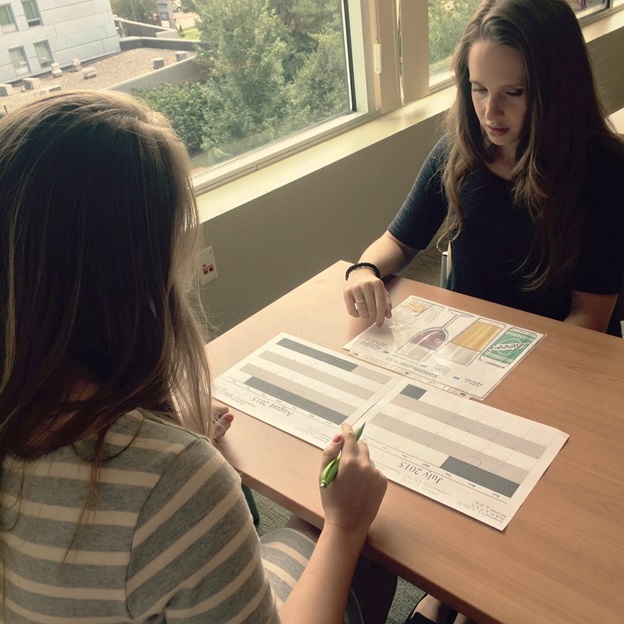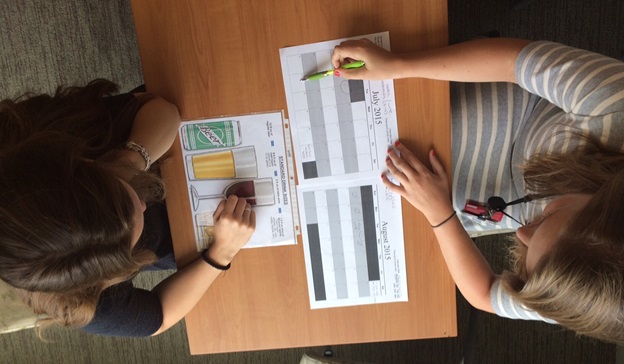Tips from the Field…
Conducting an Alcohol Timeline Follow-Back (TLFB)
by Julia Canfield, Margo Godersky, Kate Haworth, Laura Vercammen, Alicia Ventura, Natalia Gnatienko, and Tatiana Yaroslavtseva for the Boston and Russia ARCH teams
The Alcohol Timeline Follow-Back (TLFB) is an assessment tool that retroactively estimates alcohol consumption, ranging up to 12 months of past use. 1 In the URBAN ARCH Russia and Boston Cohorts, research assistants (RAs) are trained to collect past 30-day alcohol use from participants utilizing the TLFB. In this issue’s Tips from the Field, we outline how to successfully conduct an alcohol TLFB based on guidelines offered by those who developed the TLFB, and the Russia and Boston ARCH study protocols.2
Preparation:
- Use a calendar that displays both the current and previous month. (Click here to view a sample calendar used by the Russia ARCH team.) It is helpful to use a calendar pre-filled with major religious and national holidays, as important dates can serve as memory cues for participants.
- Draw an “X” on today’s date and number backwards from 1 to 30 starting with yesterday’s date (i.e. yesterday will be day 30, and 30 days ago will be day 1).
Part 1: Orienting Participants to the Assessment
- First, introduce the assessment to the participant. Explain that the two of you will work through the instrument together. Tell the participant that you understand it can be difficult to remember exactly what you had to drink on each of the past 30-days. Remind them to just do the best that they can.
- Clarify the date range of data to be collected (e.g., “the time period we are talking about is [Date X] to [Date Y].”)
- Orient the participant to the calendar. Ask the participant to identify any events they would like to add to the calendar, such as birthdays, paydays, social gatherings, arrests, hospitalizations, etc. that may help aid their memory. Point to one or more of the pre-filled holidays on the calendar as an example.
- Show the participant pictures of standard drink sizes to help prime the participant to begin thinking about quantity and type of alcohol consumed. (Click here to view a sample drink card used in Boston ARCH.)
Part 2: Assessing Typical Drinking Patterns/Priming for Daily Recall
- Always start with the general question “Have you drank any alcohol in the past 30 days, from [Date X] to [Date Y]?” Beginning with this question ensures that a participant who has not drank alcohol in the past 30 days can skip out of the daily recall portion of the instrument. In these situations, the RA should be sure to confirm a second time that no alcohol was used in the past 30 days, confirming the date range and key dates again before moving on.
- If the participant does report alcohol use in the past 30 days, then the RA should ask the participant about their typical drinking patterns. The purpose of this step is to identify information related to quantity and frequency of drinking and/or alcohol type that will help to improve the accuracy of information collected and decrease redundancies, improving administration of the instrument. This also helps to prime the participant for daily recall. Below are some examples of questions that can help assess typical drinking patterns.
- “How many days a week do you usually drink?” If the participant tells you he typically drinks Friday, Saturday and Sunday, you already have 12 potential days to confirm with the participant on the calendar.
- “What (what type of alcohol) do you usually drink?” Some participants only drink one type of alcohol (e.g. beer, hard liquor, etc.). Though you should periodically confirm throughout administration of the assessment that you are documenting all types of alcohol accurately and that the participant didn’t have more than one type of alcohol on a given day. It is important to clarify the specific type of alcohol (e.g. wine, fortified wine, beer, iced beer, malt liquor, liquor, or liqueur) the participant drinks. These distinctions are needed to convert volume to number of standard drinks.
- “How much do you usually drink?” This encourages the participant to think about the amount of alcohol he/she usually drinks. For example, a participant may always drink a six-pack of 12 oz beer, or a ½ pint of whisky. Always ask for the exact size of any beverage consumed (e.g. a 12 oz bottle vs. a 24 oz can of beer, a single shot vs. a double shot of vodka, etc.).
Part 3: Daily Assessment of Drinking
- Reorient the participant to the events you placed on the calendar together or any that may be particularly memorable to the participant, or that the participant is innately drawn to. Once you have captured the amount of alcohol consumed on each of those days, it may be easiest to move to the next most recent day and work backwards through the last 30 days. Record all alcohol use on the calendar until all 30 days are completed. When you are finished, review the TLFB with the participant to confirm accuracy.
Don’t forget…
- Record the exact quantity, size and type of each beverage reported on the day it was consumed. For example, write “3 24 oz ice beers + 1 pint of vodka.”
- It the participant prefers to report the brand of alcohol consumed as opposed to the type, it may be helpful to record the brand directly on the calendar as well. For example, you could write “6 12oz Coronas and ½ pint of E&J.”
- When asking about alcohol use throughout the month, never leave a day blank on the calendar. If the participant did not drink alcohol on a given day, write “zero.”
Tips for troubleshooting:
- Emotional Triggers with Assessment: Discussing alcohol use may be challenging or emotional for participants. If a participant becomes upset or triggered by the TLFB, take a moment to check in with the participant. Assure the participant that the questions are not meant to be upsetting, and that many people find them difficult to answer or discuss. If the visual aid displaying standard drink sizes seems particularly distressing to the participant, remove the card when it is no longer needed. When the participant is ready, proceed with the assessment.
- Alcohol Use Boundaries: It is sometimes difficult for study participants to report heavy alcohol use. Therefore, you can ask participants about the largest and smallest amounts of alcohol consumed on any given day, which ultimately allows participants to report high levels of drinking.
- Exaggeration Technique: The exaggeration technique may be employed when study participants are unable to provide details about their alcohol consumption. For example, when a participant states they have consumed “a lot” of beers on a given day, but is unable to quantify the amount, ask “Does ‘a lot’ mean two beers or 200 beers?” A typical response to this question might take the form of “Definitely not 200 beers, more like 12 to 14 beers.” Maintain a neutral expression and tone when study participants report amounts of alcohol consumed so that you do not inadvertently influence their responses.
- Consumption Amounts: Another method is to show the participant pictures of standard drinks. This method can be useful when participants are unsure of how much alcohol they have consumed and/or what constitutes one alcoholic beverage. You may also ask participants about the amount of alcohol they typically purchase in a week. For example, ask “Did you drink everything all at once, or did you drink it over “xx” amount of days?”
- In Russia, participants find it easier to report their drinking in terms of volume of alcohol consumed (e.g., 750 mL of wine), rather than in standard drinks. For this reason, alcohol amounts are recorded in mL of alcohol (and types of alcohol) consumed.
- In Boston, participants find it helpful to report common drink sizes such as pints or “40s.”
When you are finished…
After you meet with the participant, enter the information collected on the TLFB calendar into to your study’s database or website, converting the reported amounts of alcohol to standard drinks if necessary. Data entered into a database should always match the hard copy version of the calendar. We also recommend double checking the data for accuracy before submitting it to your system. If you notice an error on the paper form, correct the form by crossing out the incorrect value and writing in the correct value. (Always initial and date any changes to original data.)
Overall, the alcohol TLFB is a useful assessment tool for researchers to estimate past alcohol use among study participants in a sensitive way, while still producing high quality data.
References
- Alcohol Timeline Followback (TLFB). (2003). In J.P. Allen & V.B. Wilson (Eds.) Assessing Alcohol Problems: A Guide for Clinicians and Researchers (2nd ed., pp. 301-305). Bethesda, MD: National Institute on Alcohol Abuse and Alcoholism.
- Sobell, L., & Sobell, M. (2000). Alcohol Timeline Followback (TFLB). In Handbook of Psychiatric Measures(pp. 477-479). Washington, DC: American Psychiatric Association.

